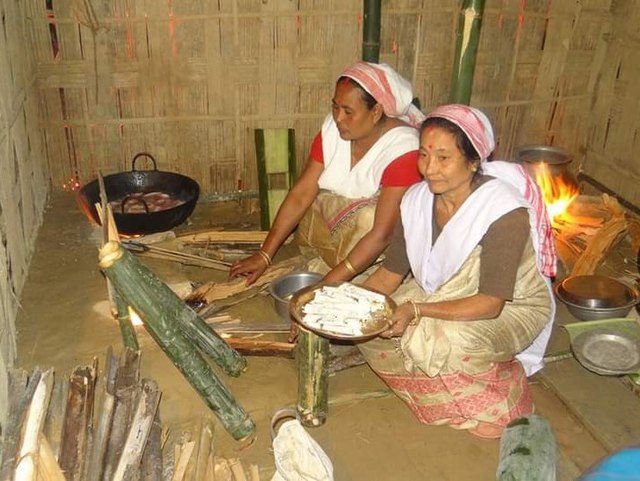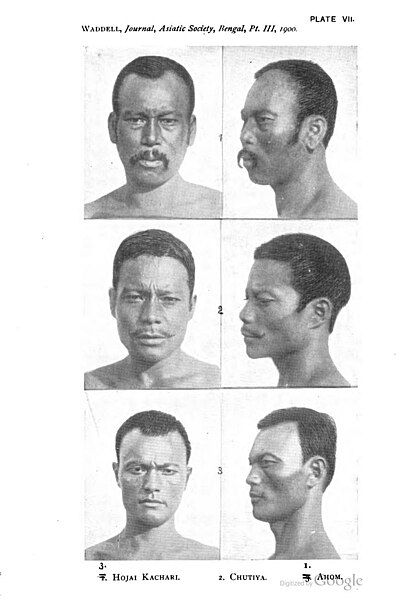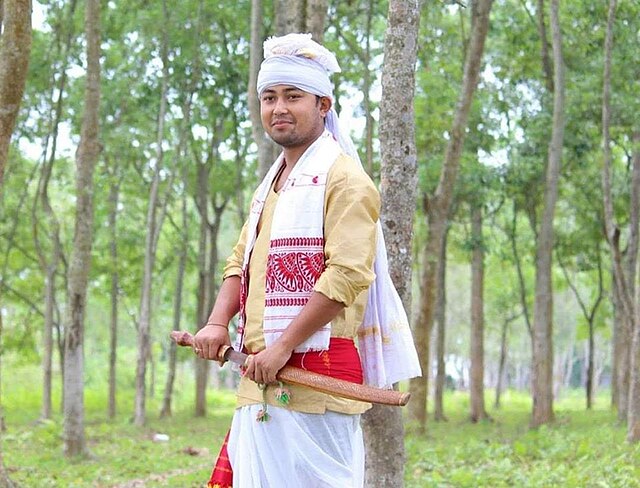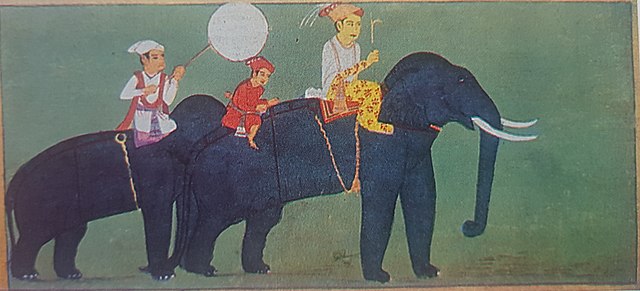The Chutia people are an ethnic group that are native to Assam and historically associated with the Chutia kingdom. However, after the kingdom was absorbed into the Ahom kingdom in 1523–24, the Chutia population was widely displaced and dispersed in other parts of Upper Assam as well as Central Assam. They constitute one of the core groups that form the Assamese people.
Chutia women preparing pithas during Bihu/Bisu.
Chutia Dharma Husori performed in Borgaon, Tinsukia
Photos from 1900 showing the typical face of a Chutia man(centre).
A Chutia man in his traditional attire
The Ahom kingdom was a late medieval kingdom in the Brahmaputra Valley that retained its independence for nearly 600 years despite encountering Mughal expansion in Northeast India. Established by Sukaphaa, a Tai prince from Mong Mao, it began as a mong in the upper reaches of the Brahmaputra based on wet rice agriculture. It expanded suddenly under Suhungmung in the 16th century and became multi-ethnic in character, casting a profound effect on the political and social life of the entire Brahmaputra valley. The kingdom became weaker with the rise of the Moamoria rebellion, and subsequently fell to repeated Burmese invasions of Assam. With the defeat of the Burmese after the First Anglo-Burmese War and the Treaty of Yandabo in 1826, control of the kingdom passed into East India Company hands.
King Siva Singha and Bar–Raja Ambika riding litter
Ahom King Siva Singha riding elephant with attendants
Silver rupee of Rudra Singha
Ahom king Rudra Singha receiving the kings of the Dimasa and the Jaintia kingdoms in his court.








